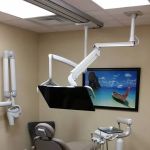- Understanding-Dental-Cavities
- Common-Signs-And-Symptoms-Of-Cavities
- Diagnosing-Dental-Cavities
- Real-Life-Experience-With-Cavity-Detection
- Preventive-Measures-And-Next-Steps
1. Understanding Dental Cavities
Dental cavities, also known as tooth decay, occur when the enamel—the hard, protective outer layer of the tooth—is damaged by acids produced by bacteria in the mouth. Over time, these acids create small holes or cavities that, if left untreated, can lead to pain, infection, and even tooth loss.
Knowing how to identify dental cavities early is crucial for maintaining good oral health and preventing complications.
1.1 Causes of Cavities
Poor oral hygiene, frequent consumption of sugary or acidic foods, dry mouth, and certain medical conditions increase the risk of developing cavities. Bacteria metabolize sugars to form acids that attack tooth enamel.
2. Common Signs and Symptoms of Cavities
Identifying cavities early involves recognizing several key symptoms:
2.1 Visible Pits or Holes
One of the most obvious signs is seeing small pits or holes on the tooth surface, especially on molars.
2.2 Tooth Sensitivity
Sensitivity to hot, cold, or sweet foods can indicate enamel erosion and early decay.
2.3 Toothache or Pain
Persistent or intermittent pain may signal that decay has reached the dentin or nerve.
2.4 Discoloration
Brown, black, or white spots on teeth can be warning signs of cavity formation.
3. Diagnosing Dental Cavities
Dentists use several techniques to diagnose cavities accurately:
3.1 Visual Examination
Using bright light and dental mirrors, dentists inspect teeth for visible decay.
3.2 Dental X-Rays
X-rays reveal cavities between teeth and under fillings that are not visible to the naked eye.
3.3 Laser or Digital Cavity Detection
Advanced tools like laser fluorescence devices help detect early enamel changes before cavities fully develop.
4. Real-Life Experience with Cavity Detection
Emma, a patient who neglected regular checkups, noticed increasing tooth sensitivity and a visible dark spot on her molar. Upon visiting her dentist, the cavity was confirmed and treated early, preventing further damage. Her experience underscores the importance of knowing how to identify dental cavities and acting promptly.
5. Preventive Measures and Next Steps
Preventing cavities involves good oral hygiene, including brushing twice daily with fluoride toothpaste, flossing, and limiting sugary snacks. Regular dental checkups allow early detection and treatment.
For those wanting personalized advice or professional dental care, visiting Dentistry Toothtruth provides access to expert services and products tailored to your dental health needs.
By learning how to identify dental cavities and maintaining proactive dental habits, you protect your smile and avoid costly treatments.







 Great Expressions Dental Centers - Newnan4.0 (372 review)
Great Expressions Dental Centers - Newnan4.0 (372 review) Simply Dental Clinic0.0 (0 review)
Simply Dental Clinic0.0 (0 review) Lakemoor Dental : Family, Orthodontics & Implant Dentistry4.0 (246 review)
Lakemoor Dental : Family, Orthodontics & Implant Dentistry4.0 (246 review) Henry J. Austin Health Center at Ewing Street3.0 (33 review)
Henry J. Austin Health Center at Ewing Street3.0 (33 review) Barkley Pediatric Dentistry4.0 (352 review)
Barkley Pediatric Dentistry4.0 (352 review) Smiles on Randall4.0 (420 review)
Smiles on Randall4.0 (420 review) The Importance of Oral Health Education During Pregnancy for a Healthy Pregnancy
The Importance of Oral Health Education During Pregnancy for a Healthy Pregnancy Best Tips for Brushing Your Teeth Properly for Healthy Gums: Essential Techniques for Oral Health
Best Tips for Brushing Your Teeth Properly for Healthy Gums: Essential Techniques for Oral Health Why Skipping Dental Checkups Can Lead to Bigger Oral Health Problems
Why Skipping Dental Checkups Can Lead to Bigger Oral Health Problems Advantages of Porcelain Dental Restorations
Advantages of Porcelain Dental Restorations How Can Diabetes Cause Tooth and Gum Problems? Preventing and Managing Oral Health Issues
How Can Diabetes Cause Tooth and Gum Problems? Preventing and Managing Oral Health Issues Healthy Habits for Promoting Good Oral Health and Hygiene: Tips for a Healthy Smile
Healthy Habits for Promoting Good Oral Health and Hygiene: Tips for a Healthy Smile